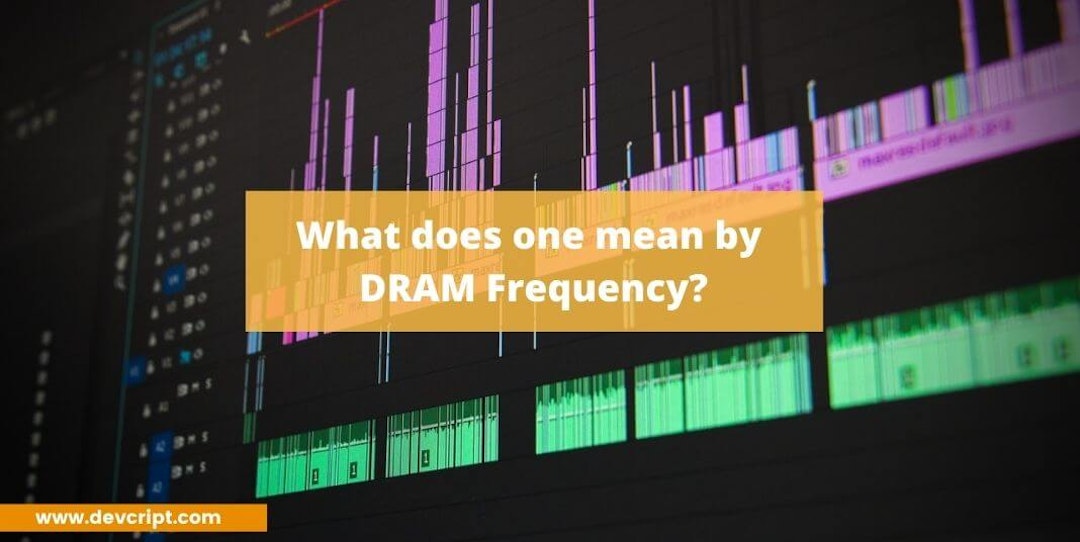The DRAM frequency is what percentage bits, are being transferred per second on one data line. DDR has an instruction bus and a knowledge bus. For a RAM that runs at 1600 MHz, this clock will run at 800 MHz, and thus the info is getting to be transferred at both, posedge and negedge (hence DDR: double rate, two bits per clock cycle)
Why is the DRAM frequency half?
DRAM is dynamic memory which we’ve two types :
- SDRAM
- DDR
SDRAM was used before, in early PC days and for the last 20 years, DDR is used. DDR is the short form of “Dual Data Rate” and which also explains it as double frequency. In digital electronics, all data transfers (everything) are synchronized to the clock. With a specific duration (period) clock is series of 0 and 1 pulses. When the CPU works at 5 GHz this means its clock is at 5 GHz.
The synchronization of internal operations to specific a clock edge, eg 0 – 1. Take this with a big grain of salt !
But DDR is different. Only because of speed up data transfer and to keep the clock lower is, to send data on both signal edges, 0 to 1 and 1 to 0. This doubles the data transfer rate – DDR.
DDR manufacturer doesn’t specify DDR clock speed but it specifies transfer speed. Cause the data is transferred twice per clock cycle rate, which is double frequency. This means all CL times must be calculated at supported frequency, not transfer rate.
For example, DDR6X utilized in Nvidia 3080 GPUs for transfer use something called PAM4. 0 and 1 are used by normal digital electronics but PAM4 uses 4 voltage levels to transfer 2 bits at the same time. That’s almost like LTE (5G) where QAM is used but with more bits. Nonvolatile storage uses something similar for storing data. 3 bits – 8 voltage levels are stored by TCL in single bit DDR6X could achieve 4 times higher transfer speeds in theory, but in praxis, it is lower because of complexity.
Also read, How to Build a Career in Blockchain
How to increase DRAM Frequency?
You can use the manual provided with the motherboard, but here are a few steps you can follow :
- After booting up the system, until the BIOS loads press the “delete” key repeatedly.
- From the foremost BIOS menu click the “OC” button.
- Scroll right down to the “Extreme Memory Profile (XMP)” settings.
- There could even be multiple profiles so you can either change the XMP setting to “Profile 1” or use the one that matches your RAM’s stated frequency and timings.
- Save settings and exit BIOS.
- Using other software or CPU-z check the frequency and timings.
How to check RAM frequency?
- click start menu and search for word CMD.
- Run the CMD prompt on your Windows supervisor.
- Simply copy-paste this or type “wmic MEMORY CHIP get BankLabel, Capacity, DeviceLocator, MemoryType, TypeDetail, Speed”.
- If you simply want to know the whole amount of obtainable RAM on your system, type: systeminfo | findstr /C:”Total Physical Memory”.
- And to urge information about the available amount of RAM out of the whole physical memory then type: systeminfo |find “Available Physical Memory”.
Also read, Suspected Russian Hackers Spied On U.S. Treasury Emails: Report
What should I set my DRAM frequency to?
If you’ve got stability issues, return to 1333 Mhz RAM frequency and default 1.5V. There’s almost no advantage in performance to run the RAM at 1600 Mhz. So it’s your wish to run it at 1333 Mhz or not.
Is it safe to change DRAM frequency?
RAM manufacturers optimize the frequency and performance in most cases. Therefore raising the frequency isn’t recommended. Also, the performance gains would be minimal while it increases the chances of malfunction. To push the ram beyond manufacturer recommendation would not be fruitful.
Also read, PetaByte Hard Drive (Futuristic Optic Data Storage Disk)
What RAM frequency do I want for gaming? How to overclock your RAM in BIOS?
The BIOS: it’s the house for overclocker but it is incomprehensible for a few. DRAM frequency is usually located in the modern EFI BIOS’ overclocking/volting options screen. Overclocking RAM like G. Skill’s RipJawsX will happily run at 2,133MHz but most of DDR3 RAM runs at 1,333MHz.
